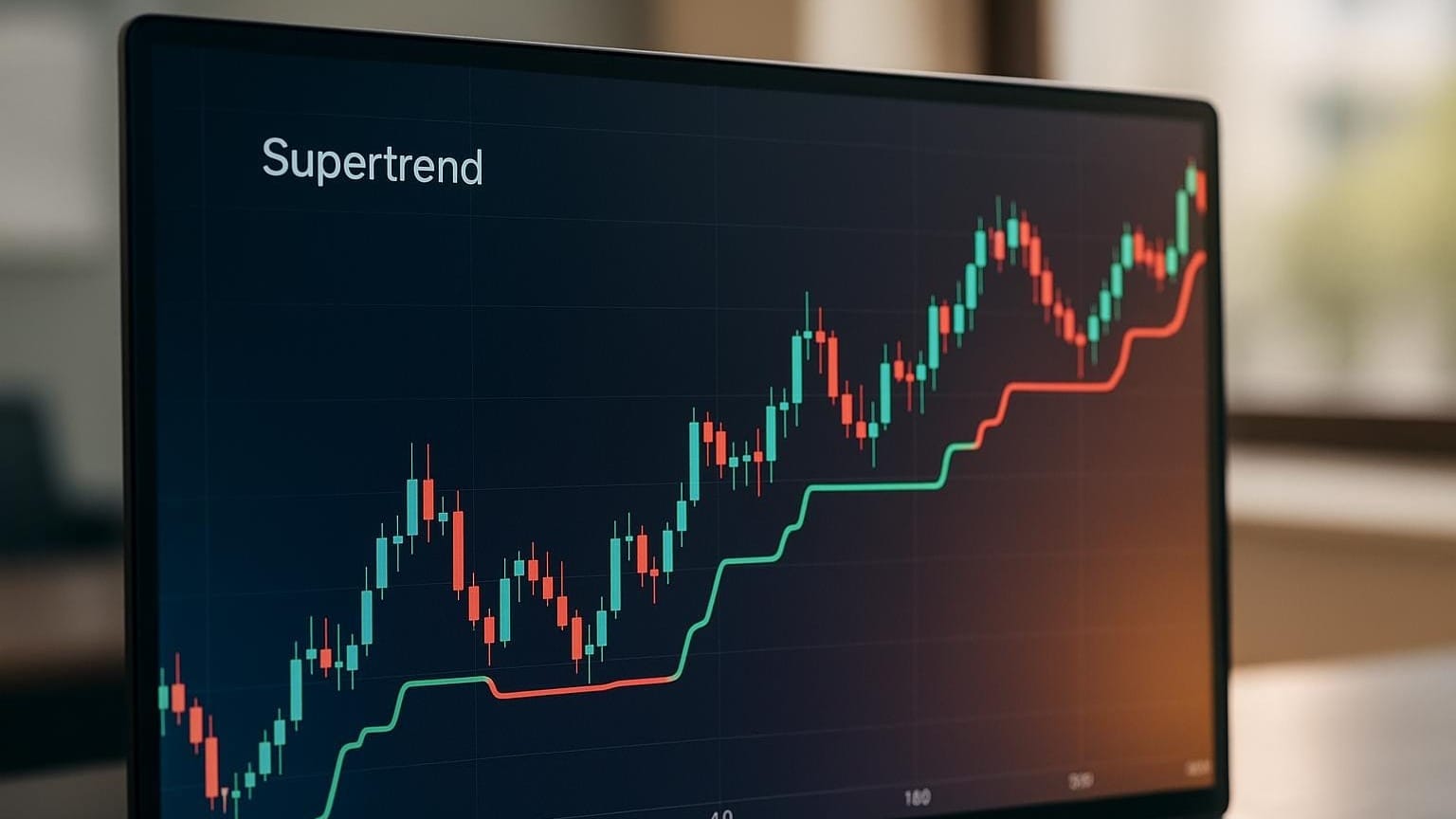Understand Days to Cover (DTC) and its impact on short squeeze potential, including calculations, interpretations, and trading strategies.
Days to Cover (DTC) is a simple but powerful metric for understanding short squeeze potential. It tells you how many days it would take for short sellers to close their positions based on the current average daily trading volume. Here's what you need to know:
- Formula: DTC = Short Interest ÷ Average Daily Trading Volume (ADTV)
- Key Insight: A higher DTC means higher risk for short sellers and greater potential for a short squeeze.
- Example: If 10 million shares are shorted and the ADTV is 2 million, the DTC is 5 days.
- Interpretation:
- 0-2 days: Low short interest, unlikely squeeze.
- 3-7 days: Moderate short interest, possible volatility.
- 8+ days: High short interest, increased squeeze risk.
Why It Matters
- For Short Sellers: High DTC = higher risk.
- For Long Traders: High DTC = potential price surge if a squeeze happens.
To use DTC effectively, combine it with other indicators like volume trends, RSI, and short interest changes. For example, during AMC's 2021 rally, its DTC of 5 days contributed to a massive price jump. Always pair DTC with strong risk management strategies to navigate volatile setups.
Days to Cover - What DTC Is and How to Find It in a Stock Chart
Calculating Days to Cover
Understanding how to calculate Days to Cover (DTC) is crucial for evaluating the potential for a short squeeze. Below, we break down the basic formula and its key components.
Basic Formula
The formula for determining Days to Cover is straightforward:
Days to Cover = Short Interest ÷ Average Daily Trading Volume (ADTV)
For example, if a stock has 10.5 million shares short and an average daily trading volume of 4.2 million shares:
10.5 million ÷ 4.2 million = 2.5 days
This means it would take short sellers 2.5 days to cover their positions if they all acted simultaneously.
Key Formula Elements
Two main factors influence the Days to Cover calculation:
Short Interest: This refers to the total number of shares that investors have sold short. FINRA mandates firms to report short interest twice each month:
- Mid-month report: Based on the settlement date of the 15th.
- End-of-month report: Based on the last business day.
Average Daily Trading Volume (ADTV): This is the average number of shares traded daily. A higher ADTV lowers the DTC value, while a lower ADTV results in a higher DTC ratio.
"Short interest offers a way to track investor sentiment because it measures the number of shares that have been sold short in each stock or market." – Charles Schwab
For instance, a stock with 5 million shorted shares would have a DTC of 0.33 days if the ADTV is 15 million. Conversely, if the ADTV drops to 1 million, the DTC would rise to 5 days. This example underscores how ADTV can significantly affect the DTC value.
You can find this data through:
- Short interest reports from FINRA.
- ADTV data available on platforms like MarketWatch, Yahoo Finance, or brokerage accounts.
Reading DTC Numbers
DTC Range Analysis
Days to Cover (DTC) helps traders understand market dynamics and assess the potential for a short squeeze. Here's a breakdown of how DTC values are typically interpreted:
| DTC Range | Market Interpretation | Trading Implications |
|---|---|---|
| 0-2 days | Low short interest, bullish sentiment | Minimal chance of a short squeeze |
| 3-7 days | Moderate short interest | Possible increase in volatility |
| 8+ days | High short interest, bearish sentiment | Higher likelihood of a short squeeze |
When DTC values are high, it may signal that short sellers could be forced to buy back shares quickly, potentially driving up prices. On the other hand, low DTC values (under 2 days) often reflect a market with bullish sentiment and a reduced chance of a short squeeze.
Connected Market Metrics
DTC analysis becomes even more insightful when paired with other market metrics:
- Volume Trends: For example, during the GME short squeeze in February 2021, a spike in trading volume led to rapid short covering, pushing prices to nearly $500.
- Short Interest Changes: Tracking fluctuations in short interest offers vital context for interpreting DTC values.
Risk Management Tips:
- Stay cautious about shorting stocks with high short interest and DTC above 8.
- Keep an eye on sudden DTC shifts, especially when paired with unusual price or volume movements.
Short Squeeze Analysis with DTC
DTC Warning Levels
When the Days to Cover (DTC) exceeds eight days, it signals that short sellers might face difficulties closing their positions, which can lead to sharp price movements. Here's a quick breakdown:
| DTC Level | Meaning |
|---|---|
| 8–10 days | Increased likelihood of a short squeeze as closing positions becomes harder. |
| 10+ days | Heightened risk, with conditions favoring dramatic short squeeze scenarios. |
Double-digit DTC levels, particularly in small-cap stocks, often result in rapid short covering and significant price spikes.
Combining DTC with Technical Analysis
To refine your strategy, pair elevated DTC levels with other technical indicators. Look for:
- Volume surges
- Oversold signals from the Stochastic Oscillator
- RSI divergence
- Supportive trends in the Commodity Channel Index (CCI)
This combination can help identify ideal entry and exit points, creating opportunities to capitalize on potential short squeezes.
Short Squeeze Examples
- Support.com (SPRT) Squeeze (May 2021): SPRT had a DTC of around eight days, with short interest exceeding 3 million shares and float coverage nearing 78%. These conditions led to a significant price surge.
- Era Group: A Nasdaq stock with a six-day DTC prompted a long trade at $6.97. Exiting when the Stochastic Oscillator signaled overbought conditions resulted in a 51% gain within just three days.
For managing risks in these volatile setups, use stop-loss orders below key support levels and exit as technical indicators show overbought conditions. Short squeezes are often more dramatic in small-cap stocks, where price jumps can exceed 15%. Effective risk management is crucial in these high-volatility scenarios.
Adding DTC to Trading Plans
Tools to Track DTC
You can keep an eye on DTC using exchange short interest reports and real-time technical charting tools.
| Platform | Key Features | Best For |
|---|---|---|
| Exchange Data | Bi-weekly short interest reports | Initial calculations |
| Technical Charts | Tracks volume and price changes | Real-time tracking |
| Stochastic Tools | Identifies oversold/overbought signals | Entry/exit points |
| RSI/CCI Indicators | Confirms trends | Supporting decisions |
Guidelines for Using DTC
Once you have reliable DTC data, follow a clear process to incorporate it into your trading plan.
-
Initial Screening
Start by identifying stocks with double-digit DTC ratios. Factor in the overall market conditions and specific stock characteristics. -
Volume Patterns
Pay close attention to volume trends. For instance, AMC's 2021 short squeeze demonstrated how certain volume patterns can hint at a potential squeeze. -
Risk Management
Use strict risk controls when dealing with potential short squeezes:Risk Factor Strategy Example Entry Timing Look for oversold conditions Era Group trade at $6.97 Position Management Set stops below support levels; exit on overbought signals Era Group's 51% gain -
Technical Confirmation
Before making a move, verify DTC signals with other technical tools:- Watch for the Stochastic Oscillator moving out of oversold territory.
- Look for strong volume spikes paired with reduced liquidity.
- Identify clear reversal patterns.
DTC Analysis Limits
Market Factors Affecting DTC
DTC, being a lagging indicator based on historical data, often struggles to remain reliable in the face of changing market conditions.
Fluctuations in trading volume can throw off DTC accuracy. For example, during AMC's early 2021 squeeze, the DTC ratio dropped to 0.6 on January 15, even as heavy buying drove prices higher.
| Market Factor | Impact on DTC | Example |
|---|---|---|
| Trading Volume Spikes | Reduces DTC accuracy | GME's DTC dropped from 2.5 to 0.7 on January 29, 2021 |
| Share Dilution/Market Cap | Skews calculations and squeeze potential | AMC's 2021 share offerings affected DTC readings |
| Volume Fluctuations | Reduces measurement reliability | Small-cap stocks experience higher volatility |
Supporting Metrics
| Metric | Purpose | Usage Guide |
|---|---|---|
| Short Interest | Tracks total short positions | Focus on percentages above industry norms |
| RSI (Relative Strength Index) | Highlights overbought/oversold conditions | Use to confirm potential squeeze setups |
| Volume Patterns | Confirms sudden volume increases | Monitor as potential signals |
Summary
Days to Cover (DTC) is a key metric for assessing short squeeze potential. When paired with other indicators, it provides valuable insights into market sentiment and trading opportunities.
A DTC ratio between 8 and 10 days often indicates a higher likelihood of a short squeeze. Take AMC's 2021 squeeze as an example—it shows how quickly market dynamics can shift.
To make the most of DTC analysis, consider combining it with:
- Technical tools like RSI and stochastic oscillators to confirm entry and exit points.
- Market cap evaluations to spot small-cap stocks, which are more prone to squeezes.
When using DTC, it's wise to enforce strict risk controls. Avoid shorting stocks with high short interest. For instance, traders have seen success when a low DTC ratio aligns with strong technical signals.
Because market conditions can rapidly alter DTC values, it's crucial to track additional metrics and stay adaptable. This approach highlights the importance of integrating DTC into a broader analysis, ensuring both its benefits and limitations are fully understood.








